Sleep Apnea Comprehensive Guide: Understanding, Diagnosis, and Treatment
Published by Dr. Jennifer Martinez | Sleep Medicine Specialist
Key Points:
- Sleep apnea affects 25% of adults, with 80% of cases going undiagnosed
- Untreated sleep apnea increases heart disease risk by 300% and stroke risk by 400%
- Snail Sleep APP can help screen for sleep apnea symptoms and monitor treatment progress
- CPAP therapy is 90% effective when properly used and fitted
- Early diagnosis and treatment can prevent serious health complications and improve quality of life
Summary: Sleep apnea is a serious sleep disorder affecting millions of people worldwide, often with devastating health consequences when left untreated. Understanding the symptoms, risk factors, and treatment options is crucial for early intervention. Modern sleep monitoring tools like Snail Sleep APP can help identify potential sleep apnea symptoms and guide appropriate medical evaluation.
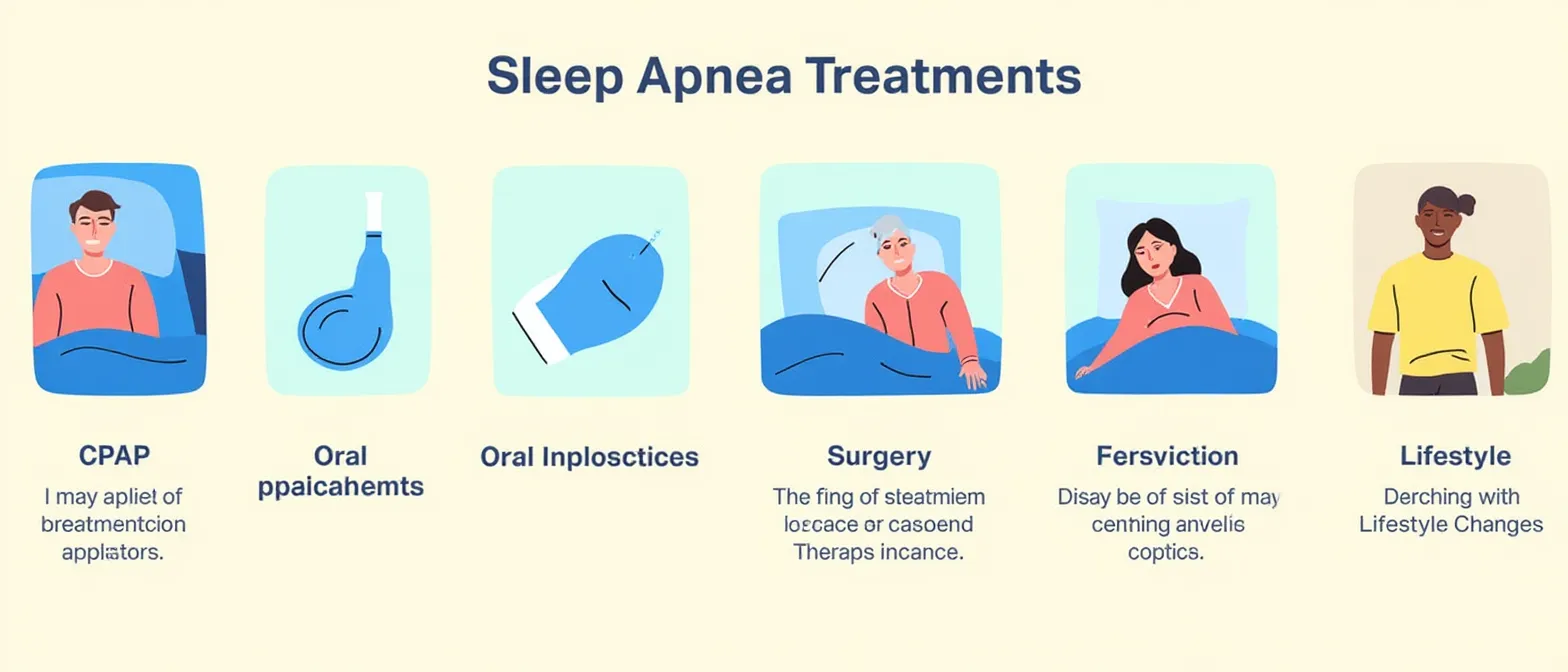 Sleep apnea treatment options diagram
Sleep apnea treatment options diagram
Sleep apnea is a serious, potentially life-threatening sleep disorder characterized by repeated interruptions in breathing during sleep. These pauses, known as apneas, can last from a few seconds to minutes and may occur 30 times or more an hour. Each time breathing stops, the brain briefly rouses the person from sleep to restart breathing, often without the individual being aware of it. This fragmented sleep prevents the body from getting the restorative rest it needs, leading to a cascade of health problems. This comprehensive guide aims to demystify sleep apnea, covering its types, symptoms, diagnostic procedures, and the most effective management strategies.
What is Sleep Apnea?
Sleep apnea is a chronic condition that affects millions worldwide, often undiagnosed. It is characterized by recurrent episodes of upper airway obstruction during sleep, leading to reduced or absent airflow despite ongoing breathing efforts. This results in intermittent drops in blood oxygen levels and fragmented sleep, which can have significant long-term health consequences.
There are three main types of sleep apnea:
-
Obstructive Sleep Apnea (OSA): The most common type, OSA occurs when the muscles in the back of the throat relax too much during sleep, causing the airway to narrow or close. This prevents air from reaching the lungs, despite the effort to breathe. The brain senses the lack of oxygen and briefly wakes the person to reopen the airway.
-
Central Sleep Apnea (CSA): This less common type occurs when the brain fails to send proper signals to the muscles that control breathing. There is no effort to breathe for a short period, leading to a pause in respiration.
-
Complex Sleep Apnea Syndrome (CSAS) or Mixed Sleep Apnea: This is a rare condition that occurs when someone has both OSA and CSA.
 Sleep apnea symptoms and snoring
Sleep apnea symptoms and snoring
Symptoms of Sleep Apnea
Many people with sleep apnea are unaware they have the condition because the symptoms occur during sleep. Often, a bed partner or family member is the first to notice the signs. Common symptoms include:
Nocturnal Symptoms (During Sleep):
- Loud Snoring: Often punctuated by periods of silence, followed by a gasp or choking sound. This is the most common and noticeable symptom of OSA.
- Observed Episodes of Stopped Breathing: A bed partner may notice pauses in breathing.
- Gasping or Choking for Air: As breathing resumes.
- Frequent Awakenings: Often with a sensation of shortness of breath.
- Restless Sleep: Tossing and turning.
- Night Sweats: Due to the effort of breathing.
Daytime Symptoms:
- Excessive Daytime Sleepiness (EDS): Feeling very tired during the day, even after a full night's sleep. This can lead to falling asleep at work, while driving, or during other activities.
- Morning Headaches: Caused by reduced oxygen levels during sleep.
- Irritability and Mood Changes: Due to chronic sleep deprivation.
- Difficulty Concentrating or Memory Problems: Cognitive impairment is common.
- Dry Mouth or Sore Throat: Upon waking.
- Decreased Libido: Reduced sex drive.
 OSA daytime sleepiness symptoms
OSA daytime sleepiness symptoms
Risk Factors for Obstructive Sleep Apnea (OSA)
Several factors can increase the risk of developing OSA:
- Obesity: Excess weight around the neck can narrow the airway. This is the strongest risk factor.
- Increased Neck Circumference: A thick neck may indicate a narrower airway.
- Narrowed Airway: Some people naturally have a narrow throat or enlarged tonsils or adenoids.
- Gender: Men are two to three times more likely to have sleep apnea than women. However, the risk increases for women after menopause.
- Age: Sleep apnea is more common in older adults.
- Family History: Having family members with sleep apnea may increase your risk.
- Alcohol, Sedatives, and Tranquilizers: These substances relax the muscles in the throat, worsening apnea.
- Smoking: Smokers are three times more likely to have OSA than non-smokers.
- Nasal Congestion: Chronic nasal congestion, from allergies or anatomical problems, can contribute to OSA.
- Medical Conditions: Conditions like congestive heart failure, high blood pressure, type 2 diabetes, Parkinson's disease, polycystic ovary syndrome, hormonal disorders, and stroke can increase risk.
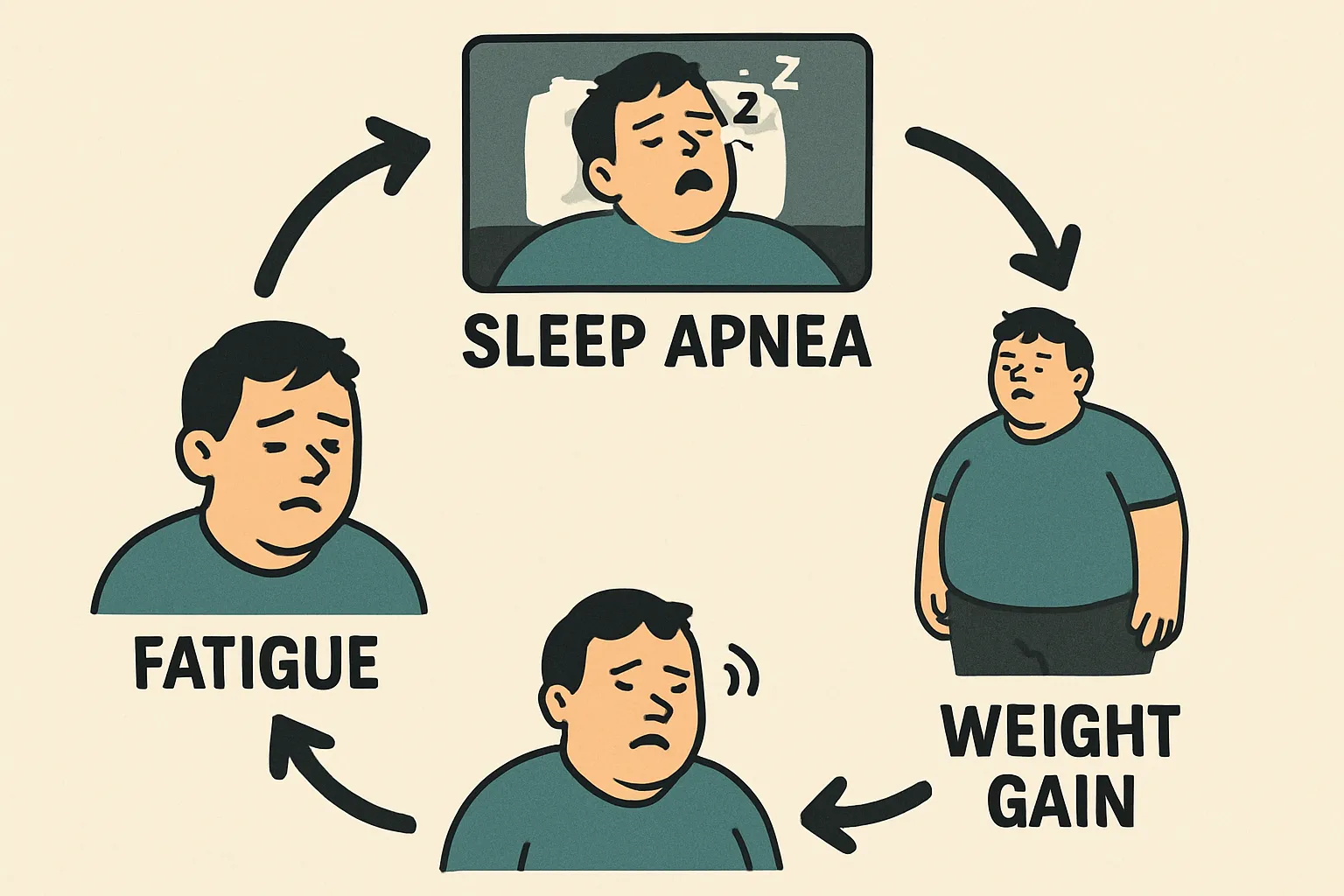 Sleep apnea obesity vicious cycle
Sleep apnea obesity vicious cycle
Diagnosing Sleep Apnea
If sleep apnea is suspected, a doctor will typically recommend a sleep study. The most common diagnostic tests include:
1. Polysomnography (PSG)
This is the gold standard for diagnosing sleep apnea. It is usually performed overnight in a sleep lab. During a PSG, various physiological parameters are monitored, including:
- Brain waves (EEG)
- Eye movements (EOG)
- Muscle activity (EMG)
- Heart rate (ECG)
- Breathing patterns (airflow, respiratory effort)
- Blood oxygen levels (oximetry)
- Snoring and body position
The data collected helps determine the Apnea-Hypopnea Index (AHI), which is the average number of apneas and hypopneas (partial airway obstructions) per hour of sleep. An AHI of 5 or more is generally indicative of sleep apnea.
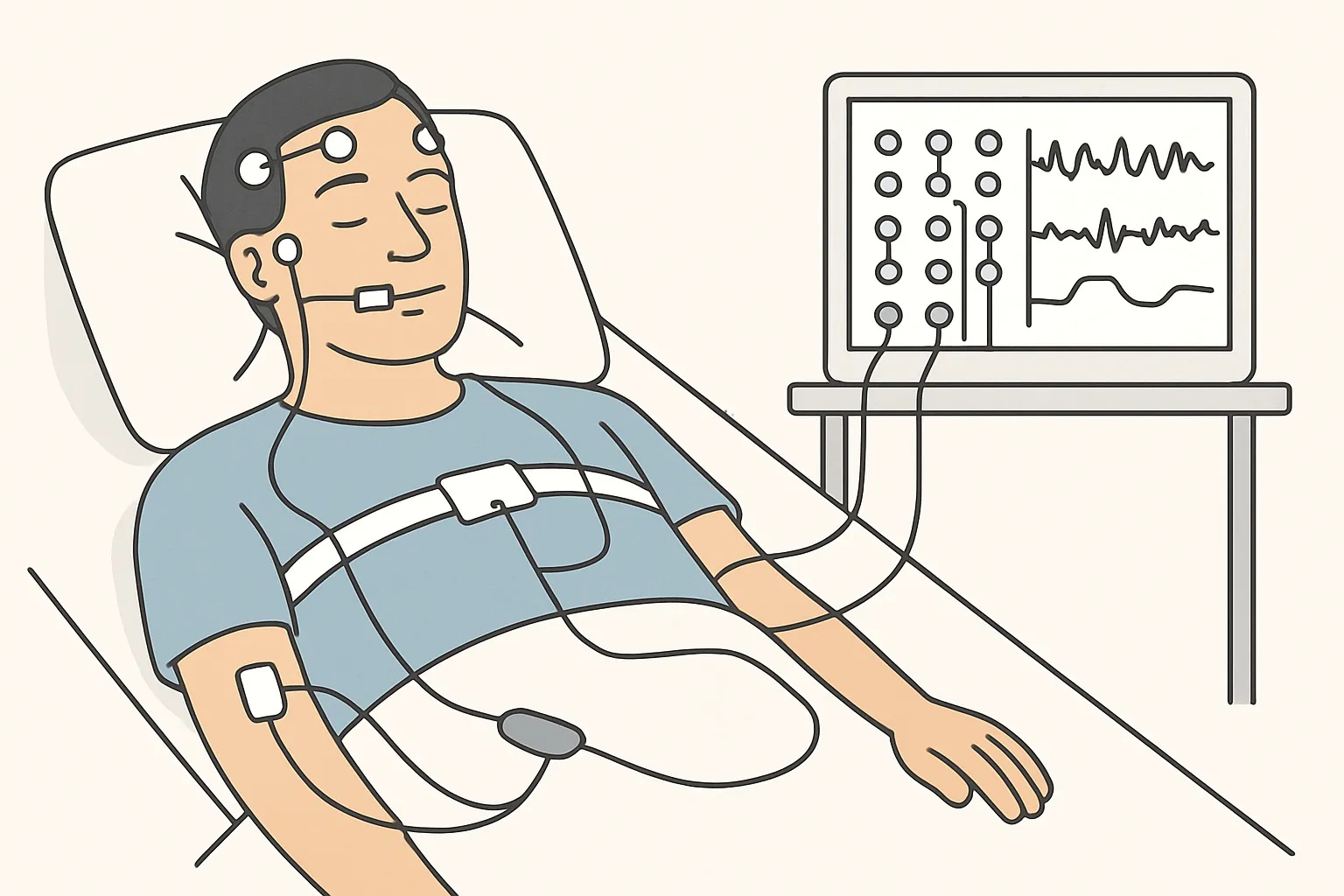 Sleep apnea diagnosis sleep study
Sleep apnea diagnosis sleep study
2. Home Sleep Apnea Testing (HSAT)
For individuals with a high probability of moderate to severe OSA and no significant comorbidities, a home sleep test may be an option. These portable devices typically measure airflow, breathing effort, heart rate, and blood oxygen levels. While convenient, HSATs are not as comprehensive as PSG and may miss some cases of sleep apnea or other sleep disorders.
Management and Treatment Strategies for Sleep Apnea
Treatment for sleep apnea aims to normalize breathing during sleep, improve sleep quality, and reduce the associated health risks. The choice of treatment depends on the type and severity of sleep apnea, as well as individual patient factors.
1. Continuous Positive Airway Pressure (CPAP)
CPAP is the most common and highly effective treatment for moderate to severe OSA. A CPAP machine delivers a continuous stream of air through a mask worn over the nose or nose and mouth during sleep. This positive air pressure keeps the airway open, preventing apneas and hypopneas.
Benefits: Significantly reduces snoring, eliminates apneas, improves sleep quality, reduces daytime sleepiness, and lowers the risk of cardiovascular complications.
Challenges: Some individuals find the mask uncomfortable, noisy, or claustrophobic. Adherence to CPAP therapy is crucial for its effectiveness.
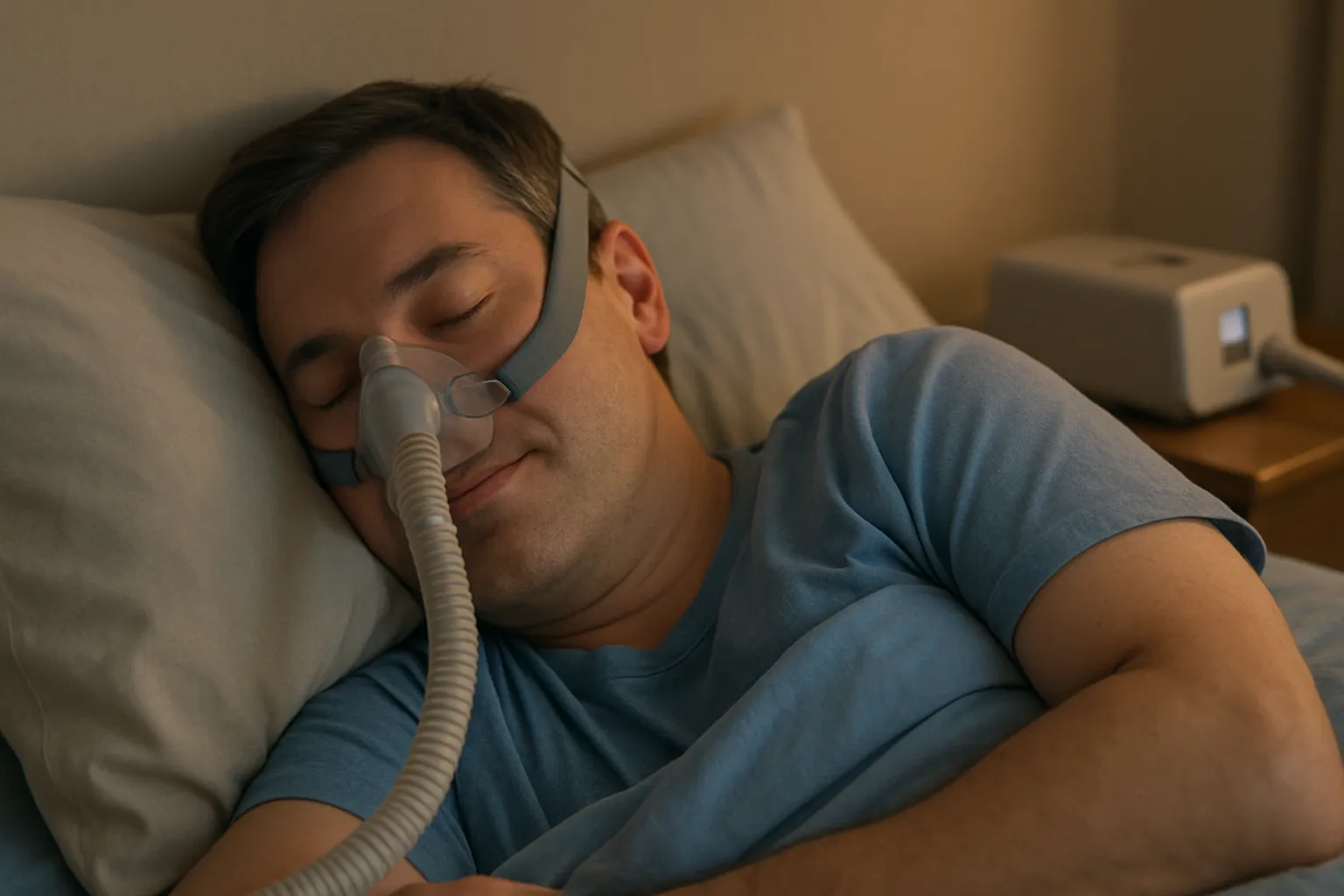 CPAP therapy effectiveness
CPAP therapy effectiveness
2. Oral Appliances
Oral appliances are custom-made dental devices that fit like a mouthguard. They work by repositioning the lower jaw and/or tongue forward, keeping the airway open during sleep. Oral appliances are often a good option for individuals with mild to moderate OSA who cannot tolerate CPAP.
Types: Mandibular Advancement Devices (MADs) and Tongue Retaining Devices (TRDs).
Benefits: Less intrusive than CPAP, portable, and can be very effective for selected patients.
Challenges: May cause jaw discomfort, tooth movement, or excessive salivation.
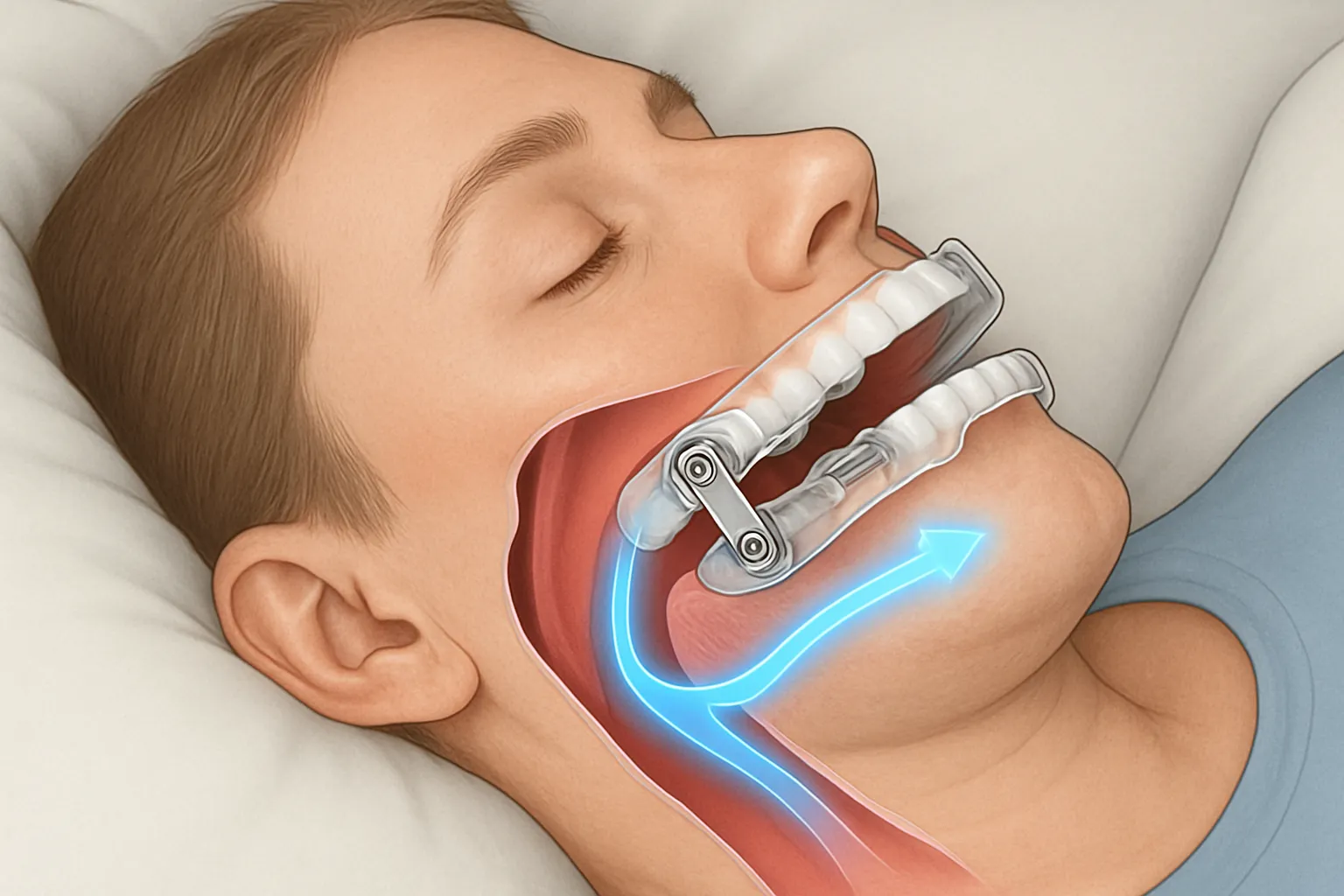 Oral appliance therapy for OSA
Oral appliance therapy for OSA
3. Lifestyle Modifications
For mild sleep apnea, or as an adjunct to other treatments, lifestyle changes can be very beneficial:
- Weight Loss: Even a modest amount of weight loss can significantly improve or resolve OSA, especially in overweight or obese individuals.
- Positional Therapy: Sleeping on your side can prevent the tongue and soft palate from collapsing into the airway. Special pillows or devices can help maintain a side-sleeping position.
- Avoid Alcohol and Sedatives: These substances relax throat muscles and can worsen sleep apnea.
- Quit Smoking: Smoking irritates the airway and can contribute to swelling and fluid retention, worsening OSA.
- Treat Nasal Congestion: Address allergies or other causes of nasal obstruction.
 Lifestyle modifications for sleep apnea
Lifestyle modifications for sleep apnea
4. Surgical Interventions
Several surgical options are available for treating sleep apnea, particularly when other treatments have failed or are not tolerated:
- Uvulopalatopharyngoplasty (UPPP): Removes excess tissue from the throat to widen the airway.
- Tonsillectomy and Adenoidectomy: Removes enlarged tonsils and adenoids that may be blocking the airway.
- Maxillomandibular Advancement (MMA): Repositions the upper and lower jaw to enlarge the airway.
- Hypoglossal Nerve Stimulation: A newer treatment that stimulates the tongue muscle to keep the airway open during sleep.
The Link Between Sleep Apnea and Weight Management
Weight management plays a crucial role in both the development and treatment of sleep apnea. There's a bidirectional relationship:
- Obesity as a Risk Factor: Excess weight, particularly around the neck, can narrow the airway and increase the likelihood of airway collapse during sleep.
- Sleep Apnea Contributing to Weight Gain: Poor sleep quality can affect hormones that regulate hunger and metabolism, potentially leading to weight gain.
 Weight management strategies for OSA
Weight management strategies for OSA
Weight Loss Benefits for Sleep Apnea
Research shows that even a 10% reduction in body weight can significantly improve sleep apnea symptoms:
- Reduced AHI (Apnea-Hypopnea Index)
- Improved oxygen saturation levels
- Better sleep quality
- Reduced daytime sleepiness
- Lower blood pressure
Complications of Untreated Sleep Apnea
If left untreated, sleep apnea can lead to serious health complications:
Cardiovascular Problems
- High Blood Pressure: OSA is strongly associated with hypertension, which can lead to heart disease and stroke.
- Heart Disease: Increased risk of coronary artery disease, heart attack, and heart failure.
- Arrhythmias: Irregular heart rhythms, including atrial fibrillation.
Metabolic Disorders
- Type 2 Diabetes: OSA is associated with insulin resistance and poor glucose control.
- Metabolic Syndrome: A cluster of conditions that increase the risk of heart disease and diabetes.
Other Complications
- Cognitive Impairment: Memory problems, difficulty concentrating, and increased risk of dementia.
- Depression and Anxiety: Mental health issues are common in people with untreated sleep apnea.
- Accidents: Increased risk of motor vehicle and workplace accidents due to daytime sleepiness.
Living with Sleep Apnea: Tips for Success
Treatment Adherence
- CPAP Therapy: Work with your healthcare provider to find the right mask and settings. Regular cleaning and maintenance are essential.
- Oral Appliances: Follow your dentist's instructions for care and wear.
- Follow-up Appointments: Regular check-ins with your healthcare provider to monitor progress and adjust treatment as needed.
Lifestyle Adjustments
- Sleep Position: Try sleeping on your side to reduce airway obstruction.
- Bedtime Routine: Establish a consistent sleep schedule and relaxing bedtime routine.
- Environment: Ensure your bedroom is conducive to good sleep (dark, quiet, cool).
- Partner Support: Involve your bed partner in your treatment plan and ask for their observations about your sleep.
Prevention Strategies
While some risk factors for sleep apnea cannot be changed, there are steps you can take to reduce your risk:
- Maintain a Healthy Weight: Regular exercise and a balanced diet can help prevent obesity-related sleep apnea.
- Avoid Alcohol and Sedatives: These substances can relax throat muscles and worsen sleep apnea.
- Quit Smoking: Smoking can irritate and inflame the airway.
- Treat Nasal Congestion: Address allergies or other causes of nasal obstruction.
- Regular Exercise: Physical activity can help maintain a healthy weight and improve overall health.
When to Seek Emergency Care
While sleep apnea is typically a chronic condition, certain symptoms require immediate medical attention:
- Severe Shortness of Breath: If you experience sudden, severe difficulty breathing.
- Chest Pain: Any chest pain should be evaluated immediately.
- Irregular Heartbeat: If you notice your heart beating irregularly or very fast.
- Severe Headache: Particularly if accompanied by other neurological symptoms.
Conclusion
Sleep apnea is a serious but treatable condition that affects millions of people worldwide. Early diagnosis and appropriate treatment are crucial for preventing complications and improving quality of life. Whether through CPAP therapy, oral appliances, lifestyle modifications, or surgical intervention, effective treatments are available.
If you suspect you or a loved one may have sleep apnea, don't hesitate to seek medical evaluation. A proper diagnosis and treatment plan can lead to significant improvements in sleep quality, daytime functioning, and overall health.
Remember that successful treatment often requires patience and persistence, as finding the right approach may take time. With the right support and treatment, most people with sleep apnea can achieve better sleep and improved health outcomes.
Key Takeaways
- Sleep apnea is a serious sleep disorder characterized by repeated breathing interruptions during sleep
- There are three main types: obstructive, central, and complex sleep apnea
- Common symptoms include loud snoring, observed breathing pauses, and excessive daytime sleepiness
- Risk factors include obesity, age, gender, and family history
- Treatment options include CPAP therapy, oral appliances, lifestyle modifications, and surgery
- Untreated sleep apnea can lead to serious cardiovascular and metabolic complications
- Early diagnosis and treatment are crucial for preventing complications and improving quality of life
🚀 Take Action Now: Your Path to Better Sleep and Health
Immediate Steps You Can Take
-
Download Snail Sleep APP - Start monitoring your sleep breathing patterns immediately
- Detect breathing pauses and irregularities
- Monitor snoring intensity and frequency
- Track sleep quality and oxygen levels
- Get early warning of potential sleep apnea symptoms
-
Assess Your Risk Factors - Evaluate your personal risk based on this guide
- Check for symptoms like loud snoring and daytime sleepiness
- Review risk factors like weight, age, and family history
- Monitor for breathing pauses during sleep
-
Consult a Healthcare Provider - Seek professional evaluation if you have concerns
- Visit a sleep medicine specialist for comprehensive assessment
- Consider a sleep study (PSG or home test) for accurate diagnosis
- Get personalized treatment recommendations
-
Implement Lifestyle Changes - Begin with preventive measures
- Maintain a healthy weight through diet and exercise
- Avoid alcohol and sedatives before bedtime
- Establish good sleep hygiene practices
- Try sleeping on your side to reduce airway obstruction
How Snail Sleep APP Can Help
The Snail Sleep APP is specifically designed to address the sleep apnea challenges discussed in this guide:
- Sleep Apnea Detection: Advanced algorithms identify breathing pauses and irregularities
- Snoring Analysis: Comprehensive monitoring of snoring patterns and intensity
- Sleep Pattern Analysis: Tracks sleep quality and identifies improvement trends
- Oxygen Level Monitoring: Detects potential oxygen desaturation events
- Treatment Progress Tracking: Monitors effectiveness of CPAP or other treatments
- Early Warning System: Alerts you to concerning patterns requiring medical attention
Success Stories
"Snail Sleep APP detected irregular breathing patterns that I never noticed. The app's analysis prompted me to see a sleep specialist, leading to a sleep apnea diagnosis. Now with CPAP treatment and ongoing monitoring through the app, my sleep quality has improved dramatically and my blood pressure is finally under control." - Robert T., Verified User
"After struggling with unexplained daytime fatigue for years, Snail Sleep APP revealed that I had mild sleep apnea. The app's detailed breathing analysis helped my doctor determine the best treatment approach. I'm now sleeping better than ever and have much more energy during the day." - Maria S., Verified User
References
- American Academy of Sleep Medicine. (2014). International Classification of Sleep Disorders, 3rd Edition.
- Epstein, L. J., et al. (2009). Clinical guideline for the evaluation, management and long-term care of obstructive sleep apnea in adults. Journal of Clinical Sleep Medicine, 5(3), 263-276.
- Young, T., et al. (2002). The occurrence of sleep-disordered breathing among middle-aged adults. New England Journal of Medicine, 328(17), 1230-1235.
- Peppard, P. E., et al. (2013). Increased prevalence of sleep-disordered breathing in adults. American Journal of Epidemiology, 177(9), 1006-1014.
- National Sleep Foundation. (2020). Sleep in America Poll: Sleep and Sleep Disorders.
Related Articles
- Obstructive Sleep Apnea Symptoms: Recognizing the Silent Threat to Your Health
- Sleep Apnea Treatment Options: From CPAP to Lifestyle Changes
- Sleep Apnea Treatment Options Beyond CPAP
